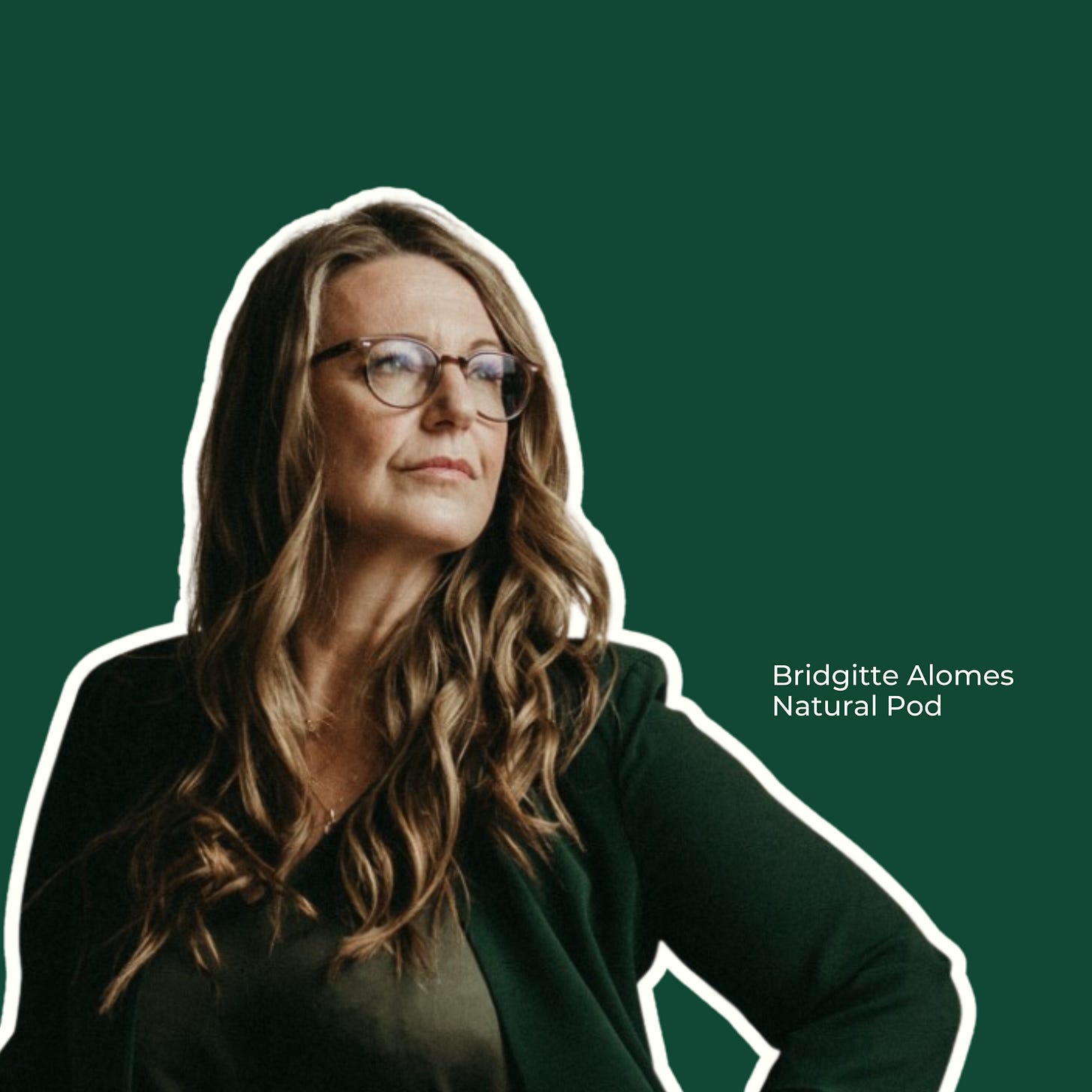Reinventing Learning Spaces: A Conversation with Bridgitte Alomes of Natural Pod
In a world where fast furniture floods classrooms and learning spaces are more often designed for convenience than creativity, one company is flipping the script. Natural Pod, founded by Bridgitte Alomes, isn’t just building furniture—it’s disrupting an industry stuck in outdated norms. As a certified B Corp and Benefit Corporation, Natural Pod is pushing back against disposable design and challenging the idea that cost and sustainability are at odds.
Rooted in deep values and a bold vision, Natural Pod is reimagining what learning environments can—and should—be: spaces that inspire, support well-being, and respect the planet. We sat down with Bridgitte to dive into the journey behind Natural Pod, the evolving definition of sustainability, and how purpose-driven companies can lead systemic change without compromising on their values.
Q: Bridgitte, let’s start at the beginning—what sparked the creation of Natural Pod?
It really started with a personal moment. My son Ark was poisoned by one of his toys, and that experience completely shifted how I saw the world. I started questioning what materials were made of, where they came from, and what kind of impact they had. That curiosity evolved into a business. Natural Pod was born out of a desire to create safe, sustainable environments for children—and today, we’ve impacted over 18,000 learning environments and more than a million students.
Q: How do you define sustainability at Natural Pod?
Sustainability for us goes deep. It’s not just about materials, though that’s part of it—we manufacture locally in British Columbia, flat-pack for a smaller carbon footprint, and use responsible sourcing. But it’s also about relationships and the lifecycle of the products. We create items that are built to last—no fast furniture here. Every product is a reflection of intentional collaboration with educators and students. For us, sustainability means thinking long, deep, and wide. And never getting complacent.
Q: Let’s talk about pricing. How do you balance affordability with your commitment to environmental standards?
We always focus on value and lifecycle. Many products on the market aren’t meant to last more than five or ten years. That’s a huge waste, especially in education where budgets are tight. Our products are multifunctional, durable, and surprisingly affordable when you factor in that you won’t be replacing them in a few years. Because we manufacture locally and manage our supply chain closely, we’re able to deliver quality without compromising our principles—or our customers’ budgets.
Q: Have you ever felt pressure to compromise your sustainability values?
No, honestly, I haven’t. That aha moment with my son really defined how I lead this company. We don’t cut corners. Yes, there are more efficient and profitable ways to do things, but they wouldn't align with our mission. We’ve found a sustainable path that works both from a material and business perspective.
Q: Can you walk us through the design process behind your products?
Every product starts with a conversation. Our very first piece was inspired by an educator who wanted a table that could double as a stage. From there, we began designing multifunctional pieces—benches that become balance beams, boats, ramps. Today, we have 450 SKUs, and each has a story behind it. We aim for timeless, flexible, and beautiful design that transcends age and pedagogy. The goal is always to support creativity, calm, and engagement in the learning space.
Q: You’ve worked with a wide range of educational environments. Who do you design for?
Everyone. While Montessori, Waldorf, and Reggio philosophies inspire many, most of our work is actually outside those settings. We believe every student—regardless of geography, curriculum, or budget—deserves a beautiful, functional space. We also include educators and, whenever possible, students in the design process. Their insights lead to more meaningful, effective environments.
Q: What’s unique about Natural Pod’s business model?
Unlike traditional catalog-driven models in our industry, we lead with dialogue and purpose. We don’t just sell furniture—we help create learning solutions. We always start by understanding the full budget and needs, and then we co-create a space that works. Repurposing existing items is part of that, too. We aim to reduce waste and build long-term value. Once you invest in Natural Pod, you’re not buying again in five years.
Q: What have been some of the most pivotal moments in building Natural Pod?
There have been many, but the thread that runs through all of them is prioritizing passion and perseverance. Staying true to our values, even when it’s tough. Finding mentors and collaborators. Being transparent with our community. And continually learning—knowing what you know, and knowing what you don’t. When I need a reminder of why I do this, I visit one of our spaces and see how it’s being used. That always brings me back.
Q: What’s next for Natural Pod?
We’re focused on expanding into more underserved communities and reimagining spaces like libraries and common areas, which are becoming hubs for collaboration and creativity. We’re also constantly looking for ways to deepen our sustainability practices and community engagement. At the end of the day, we’re not a furniture company—we’re a catalyst for change.
Q: Any final advice for aspiring impact-driven entrepreneurs?
Prioritize your passion. Stay true to your values. Ask for help—you’ll be surprised how many people are willing to support you. And don’t forget to fill your own cup. Dance, move, play—whatever keeps you grounded. Impact work is hard, but it’s worth it. And the more we support each other, the more powerful that impact becomes.
To learn more about Natural Pod, visit naturalpod.com.
For more conversations like this, subscribe to the Ideas for Impact podcast or follow us at ideasforimpact.ca.



